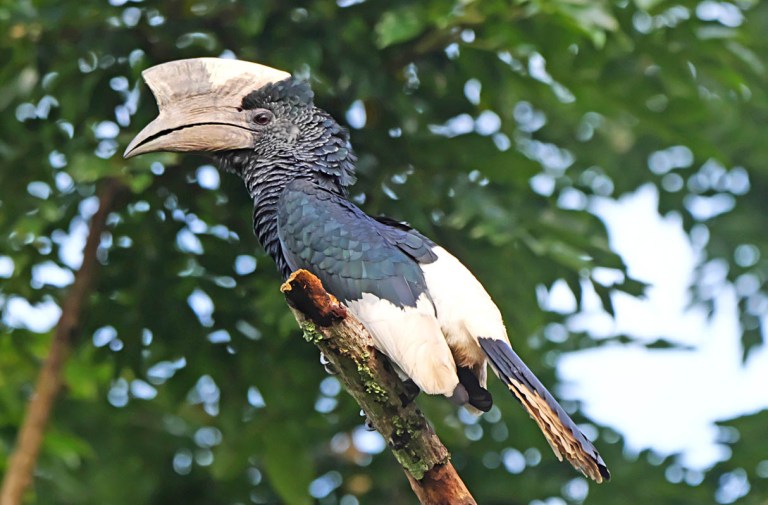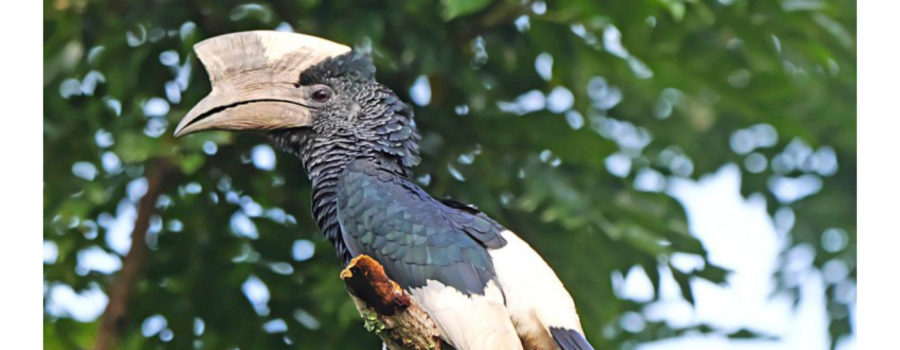The garden of the house I rent in Malawi is large, with tall mature trees filled with birdsong. I love to sit outside in the morning’s shade when the air is cool and the birds are loudest. The songs are beautifully varied, an avian symphony starting each day.
Two weeks ago, a new song appeared. Louder and deeper, I heard it less frequently, but it was distinct from the usual morning sounds. Though familiar, I could not remember exactly where I had previously heard this sound. I retrieved the binoculars and walked toward the loud call, hoping to catch a sighting. In a large tree at the side of the garden sat six huge birds with black and white plumage and enormous, strangely shaped beaks. Hornbills.
There are seven varieties of hornbill in Malawi, but I had never seen this one. I was most familiar with the Southern red-billed hornbill, frequently seen in Malawi’s national parks. The birds in my garden were bigger and had a much larger casque, the growth atop the beak, than the red-billed variety. The casque of these birds was so large, it was challenging to understand how they could fly. But they could. A few minutes later the small flock alit, all taking flight simultaneously, calling as they flew away. The birds in my garden’s trees were silver-cheeked hornbills, the first I had ever seen.
Two weeks ago, a new song appeared. Louder and deeper, I heard it less frequently, but it was distinct from the usual morning sounds.
Silvery-cheeked hornbills are not uncommon in east African mature forests. They are large birds measuring 80 cm (31 inches) long. Their plumage is shiny black except for a white rump and tips of their tail feathers. They live in pairs, but roost in large flocks. Though their diet is primarily fruit, they eat insects, centipedes, geckoes, and even smaller birds.
All hornbills have large downward curved beaks. Atop every hornbill beak is a casque that varies greatly in size. Casques can be so small that they are difficult to perceive, or so large (like in the silvery-cheeked hornbill) that they appear unwieldy. The casque is hollow (so that is how they fly with that huge thing on their face!) and serve as counterweights for the large beak. They also amplify vocalizations. Though casques are present in both sexes, they are larger in males.
In the following days, the flock grew and shrank. One morning this past week I set off at 5:30 a.m. for my morning run, opened the squeaky front gate, and 15 huge silvery-cheeked hornbills took flight directly over my head, their wings whooshing as they beat the air. It was a beautiful way to start the day.







